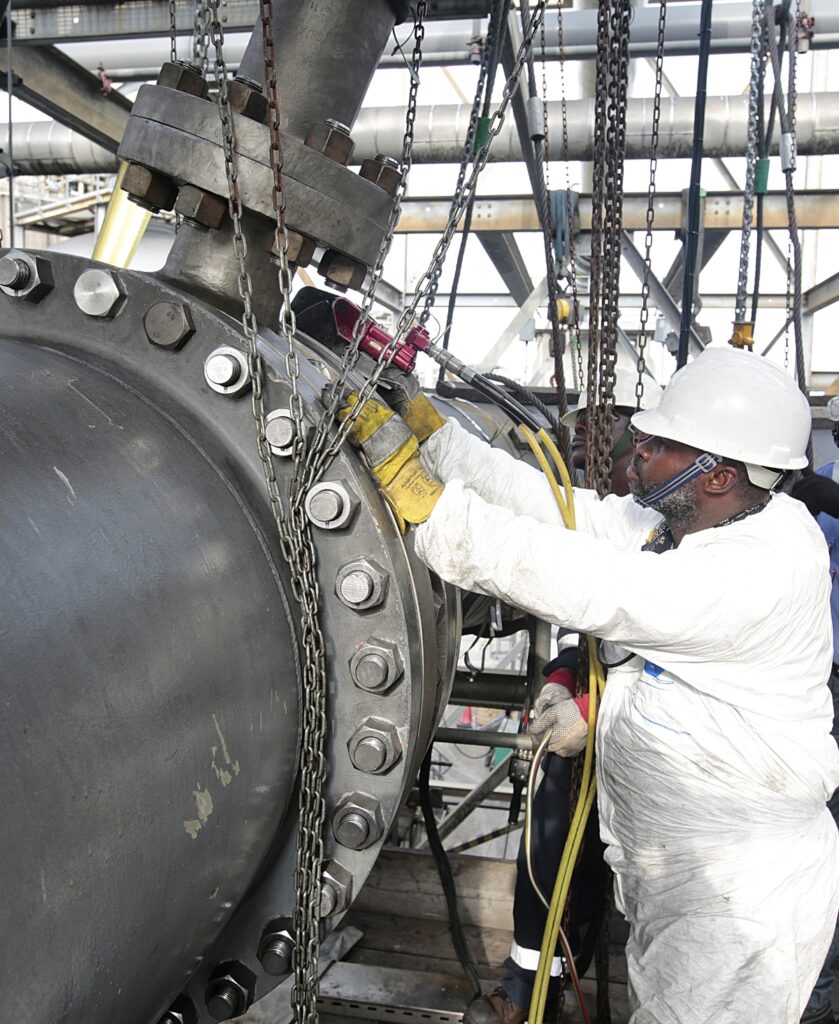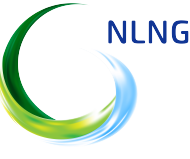NLNG’s six-train production plant, spanning 2.27 square kilometers of reclaimed land in Finima, Bonny Island, is a source of pride for both Nigerians and the international community. As one of the largest and most efficient LNG plants
globally, its performance is consistently benchmarked against leading facilities worldwide.
The plant has successfully transitioned from a construction project into a stable, high-performing production operation, backed by a comprehensive framework of people, processes, and systems. With an unwavering focus on operational excellence and continuous improvement, NLNG regularly seeks opportunities to enhance production. By incorporating
advanced techniques and processes, the plant optimizes its output, reduces bottlenecks, and manages human and environmental impacts.
In its commitment to long-term sustainability, NLNG has embarked on a structured asset rejuvenation programme, aimed at extending the
lifespan of its facilities beyond their original design. This initiative is supported by a robust Health, Safety, Security, and Environment (HSSE) culture, ensuring the safe and efficient utilization of resources.
Milestones and
Development Phases

Our commitment goes beyond meeting customer needs; it’s about propelling the automotive industry forward through our products and services. Recognizing the automotive industry’s significance as a vital driver of the economy, we have established a dedicated strategic business unit – automotive (SBU-A). This vertical, within our marketing department, takes a holistic approach, envisioning the sector’s long-term future as we continue to focus on its growth and development.
This project included the construction of the first two trains (Trains 1 and 2), the Gas Transmission System (GTS) and the Residential Area (RA).
Construction commenced in February 1996, and by August 1999, Train 2 was ready for startup, with LNG production starting on September 15. Train 1 followed shortly after, becoming operational on February 27, 2000.
Expansion
and Growth
In February 1999, NLNG took another FID, launching the second phase of its development—the Expansion Project, which included Train 3 and the Natural Gas Liquids (NGL) Handling Unit (LHU),
encompassing condensate stabilization and Liquefied Petroleum Gas (LPG) production. This phase was completed in November 2002.
The NLNGPlus Project, comprising Trains 4 and 5, began with an FID in March 2002. Train 4 came online in November 2005, followed by Train 5 in February 2006.
NLNG’s further expansion, the NLNG Six Project, which included Train 6 and additional condensate processing, LPG storage, and jetty facilities, commenced after the FID in 2004. Train 6 became
operational in December 2007.

Capacity and
Future Growth
Today, NLNG’s six operational trains have the capacity to produce 22 million tonnes per annum (mtpa) of LNG and 5 mtpa of NGLs, drawing on an intake of 3.5 billion standard cubic feet per day (Bcf/d) of natural gas.

Looking ahead, plans for the construction of Train 7, which will increase NLNG’s total production capacity to 30 mtpa, are well underway. The FID for the 8 mtpa train was finalized in December 2019, and the Engineering, Procurement, and
Construction (EPC) contracts were awarded to the SCD JV Consortium in May 2020.
Key Elements of NLNG’s Operational Facilities
NLNG’s state-of-the-art infrastructure includes several key components that ensure seamless production, storage, and transportation of Liquefied Natural Gas (LNG), Liquefied Petroleum Gas (LPG), and condensates. These include:
Diversified Gas Supply:
A robust network comprising both Associated Gas (AG) and Non-Associated Gas (NAG), supported by six dedicated gas transmission pipelines, four of which are located onshore.
LNG Processing Units:
Six highly efficient LNG processing trains, boasting a combined nameplate capacity of 22 million tonnes per annum (mtpa).
LNG Storage Tanks:
Four massive LNG storage tanks, each with a capacity of 84,200 cubic meters, ensuring adequate on-site storage.
LPG Storage Tanks:
Four refrigerated LPG storage tanks, two for propane and two for butane, each with a capacity of 65,000 cubic meters.
Condensate Stabilisation Plants:
Five common condensate stabilizationplants, vital for preparing condensatesfor storage and export.
Power Generation:
A fleet of 10 gas turbine electricity generators, with a combined capacityexceeding 320 MW, powering theentire complex.
Export Jetties:
Two export jetties—one handling bothLNG and LPG, and the other handlingLNG and condensates—capable ofsupporting over 400 loadings per year.
LNG Shipping Fleet:
A dedicated fleet of 23 LNG ships thatensure the reliable delivery of products to global markets.
Materials Offloading Jetty:
A jetty dedicated to receiving essentialmaterials required for plant operations.
Passenger Jetty/Terminal:
A terminal designed to facilitate themovement of personnel and visitorsto and from the facility.
Condensate Storage:
Three condensate storage tanks, each with a capacity of 36,000 cubic meters, for storing natural gas liquids.
Common Fractionation Plant:
A centralized fractionation facility dedicated to processing LPG, ensuring efficient handling of natural gas liquids.


